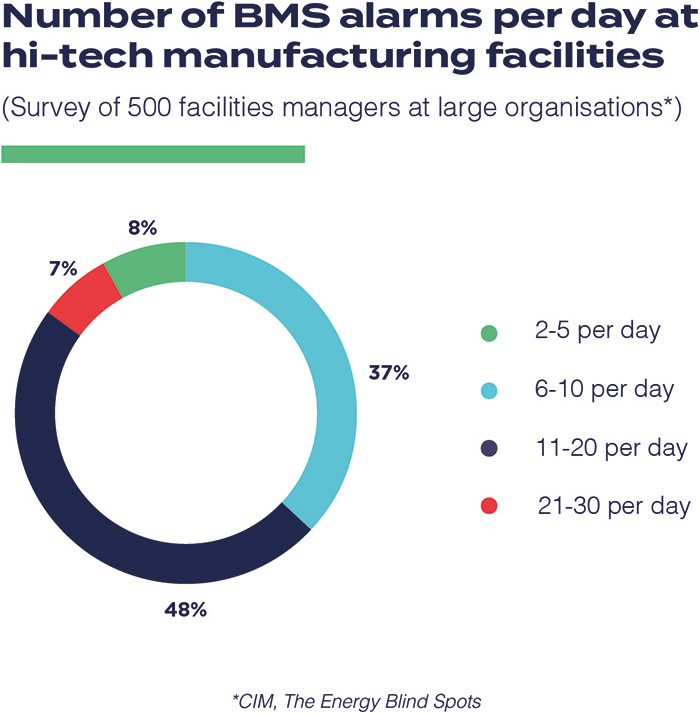Resolving Data ‘Disorder’ Key To Mitigating Manufacturing Energy Price Rises
 Facility managers at energy-intensive plants must evaluate all ‘disordered’ data from building management systems to take action against spiralling energy costs, says a sector expert.
Facility managers at energy-intensive plants must evaluate all ‘disordered’ data from building management systems to take action against spiralling energy costs, says a sector expert.
The warning comes from Paul Walsh, General Manager at CIM, following voicings of concern by high energy-using UK sectors that governmental support to combat skyrocketing gas and electricity prices will not be forthcoming. With industry warning of tightening margins, reduced operations and foreign-based firms moving elsewhere, Paul is imploring manufacturers act quickly to address this lack of assistance by analysing existing data for potential OPEX cost reductions.
He says: “This is an unprecedented time for energy-intensive manufacturers, with global events putting unprecedented pressure on oil and gas supplies, and all at a time when industries are still recovering from COVID. These companies are facing a perfect storm without governmental support, so facilities managers must embrace the philosophy of marginal gains and see what savings they can make using existing BMS data.
“Consistent, small efficiencies across multiple systems, including HVAC provision, can make a big difference to the overall bottom line and help offset the worst of rising energy prices. However, many facilities managers are currently burdened with a huge morass of disordered data from alarms and notification. Translating this into actionable insight that can lead to quick wins will be key to mitigating the worst of spiralling ills, so taking steps in this area should be viewed as a matter of urgency.”
Paul’s view is echoed in CIM’s recent industry report, The Energy Blind Spots, which surveyed 100 facilities managers working in large hi-tech and life sciences manufacturing plants on their most pressing issues. It found that the average BMS delivers 12.5 alarms every day, with 50% of respondents surveyed reporting as many as 30. On top of this, 62% of those questioned said they were deficient in terms of data collection and analysis for their energy-intensive HVAC systems.
“The sheer number of notifications that facilities managers receive, combined with unfamiliarity with how to record and interpret data, is creating a real blind spot for the sector at a time when it needs all the help it can get,” says Paul. “In such a situation, it is no wonder alarm fatigue is developing, and crucial warnings are going unanswered. But the problem isn’t one of too much data – the issue is how do we best analyse it so we can best optimise existing equipment.
“My personal belief is that if manufacturers want to make more of what they already have, they need the best of both the digital and human worlds. Namely, building analytics platforms are being developed that apply machine learning and automated Fault Detection diagnostics to building data. What this results in is actionable, predictive and proactive insights and process improvements that do not degrade over time. Most importantly though, these systems must be underpinned by experienced engineers to ensure facilities management workloads are prioritised towards actions that achieve the strongest sustainability and efficiency gains.
He concludes: “With global events continuing to impact industry, a ‘fix-and-forget’ strategy can no longer be considered effective. Instead, guidance and expertise received through implementing solutions such as CIM’s PEAK platform can help mitigate current and future stresses by creating more resilient and efficient sites.”
To download the full report, The Energy Blind Spots, click here.
























































